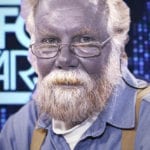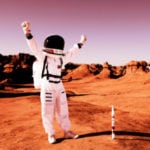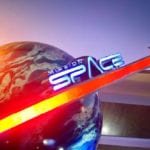 History
History  History
History  Technology
Technology Top 10 Everyday Tech Buzzwords That Hide a Darker Past
 Humans
Humans 10 Everyday Human Behaviors That Are Actually Survival Instincts
 Animals
Animals 10 Animals That Humiliated and Harmed Historical Leaders
 History
History 10 Most Influential Protests in Modern History
 Creepy
Creepy 10 More Representations of Death from Myth, Legend, and Folktale
 Technology
Technology 10 Scientific Breakthroughs of 2025 That’ll Change Everything
 Our World
Our World 10 Ways Icelandic Culture Makes Other Countries Look Boring
 Misconceptions
Misconceptions 10 Common Misconceptions About the Victorian Era
 Mysteries
Mysteries 10 Strange Unexplained Mysteries of 2025
 History
History 10 Things You Didn’t Know About the American National Anthem
 Technology
Technology Top 10 Everyday Tech Buzzwords That Hide a Darker Past
 Humans
Humans 10 Everyday Human Behaviors That Are Actually Survival Instincts
Who's Behind Listverse?

Jamie Frater
Head Editor
Jamie founded Listverse due to an insatiable desire to share fascinating, obscure, and bizarre facts. He has been a guest speaker on numerous national radio and television stations and is a five time published author.
More About Us Animals
Animals 10 Animals That Humiliated and Harmed Historical Leaders
 History
History 10 Most Influential Protests in Modern History
 Creepy
Creepy 10 More Representations of Death from Myth, Legend, and Folktale
 Technology
Technology 10 Scientific Breakthroughs of 2025 That’ll Change Everything
 Our World
Our World 10 Ways Icelandic Culture Makes Other Countries Look Boring
 Misconceptions
Misconceptions 10 Common Misconceptions About the Victorian Era
 Mysteries
Mysteries 10 Strange Unexplained Mysteries of 2025
Top 10 Space Movies Judged By Actual Astronauts
I think we can all agree that some movies, especially space movies, go so far beyond what is realistically possible that they suspend belief. But as the majority of us have not been in outer space, it is, at times, hard to know what is fact and what is fiction. Which is where our real life astronauts come in:
Chris Hadfield is a Canadian retired astronaut, engineer, and former Royal Canadian Air Force fighter pilot. He was the first Canadian to walk in space, has flown two Space Shuttle missions and served as commander of the International Space Station (ISS).
Garrett Reisman, an American engineer and former NASA astronaut, was a backup crew member for Expedition 15 and joined Expedition 16 aboard the International Space Station for a short time before becoming a member of Expedition 17.
Nicole Stott is also an American engineer and a retired NASA astronaut. She served as a Flight Engineer on ISS Expedition 20 and Expedition 21 and was a Mission Specialist on STS-128 and STS-133.
On this list are 10 movies reviewed by the experts above.
Possible spoilers ahead!
10 Space Myths We Believe Because Of Movies
10 Interstellar (2014)
Interstellar is a science-fiction epic, directed by Christopher Nolan and starring Matthew McConaughey and Anne Hathaway among others. Set in a future where a failing Earth puts humanity on the brink of extinction, it sees an intrepid team of NASA scientists, engineers and pilots attempt to find a new habitable planet, via interstellar travel.
But when a real-life astronaut says “I’m confused”, you know it’s bad. And according to Hadfield, there just isn’t much else to say about this fictional interpretation of what happens in a black hole. As no one has actually been in one and lived to tell the tale, we simply don’t know what exactly happens in there.
Reisman’s opinion of the bookshelf tesseract is not that favourable, but he does still rate the movie at an 8 as they did get a lot of the other scientific facts, especially around relativistic effects, right.
9 Guardians of the Galaxy (2014)
“Look, any movie with a talking raccoon is OK in my book,” says Reisman.
The scene above is more or less on par with a talking raccoon, though. Even though Star-Lord (Chris Pratt) is wearing a helmet to protect himself from the effects of the vacuum outside his spacecraft, what about the rest of his body? While we as the viewers know that it’s fictional and highly dramatized to portray his self-sacrificing love for Gamora (Zoe Saldanha), it is still interesting to hear our real-life astronauts’ explanation of what would actually happen to someone exposed to a vacuum in this way.
First up, barotrauma. This refers to the gases inside your lungs and sinuses that will start expanding very quickly once exposed to a vacuum as there is no longer any air pressure pushing against them. Then, compression sickness, also known as bends, suffered by deep-sea divers who come up to the surface too quickly, not allowing the gases inside and outside your body to equalize. Not good, obviously, but also not quite as dramatic and gruesome as Arnold Schwarzenegger’s portrayal in Total Recall.
8 Total Recall (1990)
The 1990s, Total Recall was seen as one of the greatest action movies of Arnold Schwarzenegger’s career. It’s also one of the smarter movies that the actor was ever involved in. To this day, many of his fans are still wondering exactly how the movie ended. Was Douglas Quaid (played by Schwarzenegger) actually a secret agent who had false memories of his life implanted? Or is most of what we see throughout the film just the playing out of the false memory that was implanted?
Our astronauts, as one would expect, are less interested in the complexities of the plot and far more concerned with the practical and scientific elements of the movie. The shattering helmet, for example. According to Stott, helmets are far more durable than we see in the clip above. Although there are parts that could possibly be cracked by sharp pieces of metal, for example, visors are constructed of very durable, sturdy polycarbonate that simply does not shatter on impact.
7 Gravity (2013)
All of our experts agree that if you want to know what it looks like in outer space, there has never been a better movie than Gravity. The sights and sounds are very accurate and reminiscent of exactly what she experienced on her space walks, Stott recalls. The scenery, especially in the opening scenes of the slow-turning earth and stunning lighting, truly gives you the raw emotion of how breathtakingly beautiful it is up there, says Hadfield … “Just don’t pay attention to what any of the astronauts are doing.”
Reisman agrees that, although beautifully shot, the movie defies the laws of physics. It deals with space debris causing havoc on the international space station. And yes, rightly enough, there is a lot of stuff floating up there. However, according to Stott every little piece bigger than a fist is tracked by a scientist on earth and a huge cloud of debris suddenly surprising the space walkers is just unrealistic.
During the scene where the 2 main characters are making repairs to the Hubble telescope, Sandra’s character releases the straps tying her to the robot arm and goes floating off into space as if there is some external force exercised upon her and not the equipment. In another scene she grabs Clooney’s tether and he tells her that she must let him go to save herself. Why? Once she has stopped his momentum, he wouldn’t be going anywhere. Even the satellite whizzing by at around 120mph is so far from reality that our real life astronauts just laugh. Satellites travel at 5 miles per second, 10 times faster than a rifle bullet. They would have literally no time to identify what they are seeing.
6 Armageddon (1998)
Most of us, I think, would agree that this movie very much falls into the fictional category. It’s pretty obvious that much of what happens is total nonsense. Hadfield calls it tragic-comic. “It’s as bad as any space movie has ever been. It’s just atrocious.”
Stott, however, noticed some redeeming factors. Especially the swimming pool scene above. According to her, what you see on screen is pretty much exactly what she herself experienced and remembers about training in NASA’s big pool. When you’re training underwater, she says, you are surrounded by safety divers helping you with the equipment and getting in and out of the pool. “Thankfully, in space it’s actually easier to move around.”
Although she agrees that the 12 day training is more or less impossible, her opinion is that NASA was just trying to familiarise the crew with what it would feel like up in space. Thus the pool and T-38 jets. Real life astronauts go through the same processes in order to learn to work complex systems in similar environments.
10 Joys And Terrors Of Space Exploration
5 First Man (2018)
Before astronauts become astronauts, they usually have some other technical career. Often, they start out as test pilots, as was the case with Neil Armstrong and his fellow crew members. In the movie, Armstrong is seen flying an X-15. Nothing wrong with that. The representation, though, is flawed. According to Hadfield, an X-15’s vibrations would be so minute as to be imperceptible. If your aircraft is rattling to the extent this one is, there’s got to be something wrong. And then somehow, for some unknowable reason, it all suddenly goes dead quiet. Where did all that sound disappear to?
Even the sky as seen through the aircraft’s windows is all wrong. In real life, the higher you go, the darker it gets. In the movie, the colour of the sky goes from sky blue to light blue and then suddenly goes to black.
But the most disappointing thing about the movie, Hadfield says, is the glum atmosphere and lack of joy around the mission. Being an astronaut is a great adventure and although the members of the crew are all aware of the seriousness and potential dangers of the situation, they are also awed and overjoyed at the mere possibility of being in outer space.
4 Passengers (2016)
How do you create gravity if there’s no planet around? According to our experts, spinning the spacecraft you’re travelling in will create a gravity-like pseudo force: centrifugal force, to be exact. Much like the washing machine rides at amusement parks, the spinning effects a force that pushes objects (including people) against the outer edges of the vehicle.
The swimming pool scene in Passengers is a great visual representation of what would happen to the water once the ship has stopped spinning and the centrifugal force has therefore gone. Not that that is likely to happen, according to Hadfield. It would take a great external force (or brakes) to stop the motion of such a huge vehicle in outer space. The other hiccup here is that the force would not magically reappear and send everything crashing down like in the movie. To get such a massive metal structure spinning again would take considerable time and effort.
But what happens when the globules of water amass in a big blob is very realistic and exactly what happens to droplets of water in the international space station. Even tears, according to Stott.
3 The Martian (2015)
Reisman rates this movie at a 9 because other than the idea that puncturing the glove of your space suit will cause it to act like a jet pack and propel you around space like Iron Man, the movie is pretty accurate.
Hadfield disagrees. According to him there are several scientific misnomers. For one, Matt Damon’s character, Mark Watney, would not be quite as buff as he is in the movie. The red planet’s gravity is only about 38% of the earth’s. Mark would therefore only weigh about one third of his portrayed weight. The atmosphere is also incredibly thin on Mars – you would have to climb Everest four times to get to the height where the air is equally as thin on earth. And when you know that, many of the scenes outside the spaceship become problematic.
The idea behind Watney growing his own crop of potatoes on Mars is not far from the truth though. All he needs is nutrient-rich soil (which he recreates using his own excrement), together with heat, water and oxygen. And these can be created with relatively simple chemical reactions using the spaceship’s supplies, something every astronaut is thoroughly trained in.
2 2001: A Space Odyssey (1968)
Reisman and Hadfield both really love this movie, and even the science holds up really well. In short, the movie is beautifully, artistically and quite realistically portrayed.
When Hadfield returned from his first ever space-walk, he had no words to explain to his wife what he had seen. Other than “it’s exactly as they imagined in the movie”. Quite a feat considering the film was made before man even landed on the moon! The movie also makes use of the idea of creating centrifugal force to simulate gravity by rotating the international space station. And, according to Reisman, they even got the speed right: about 1,5 rpm which will result in around ½ a G (G = Gravitational Force). More or less half the gravity you will feel on earth, enough to keep the passengers and other objects more or less in place.
1 Apollo 13 (1995)
“Maybe the most realistic of all the space movies,” says Hadfield.
Apollo 13 tells the story of astronauts Lovell, Haise and Swigert, who, during the Apollo 13 moon mission, find themselves stranded when their spacecraft gets damaged. Several master alarms sound and the astronauts realise “Houston, we have a problem”. Hadfield himself has used the famous line on a few occasions and says that it truly is the most impactful sentence imaginable. Everyone who hears it immediately stops what they’re doing and pays attention to what the commander is going to say next.
This docudrama beautifully portrays the process of problem solving that happens on a daily basis in spaceflight. Not as dramatically, thankfully, but the principle is the same. According to our experts, director Ron Howard went to great lengths to ensure the accuracy of what is shown in the movie. Even the dialogue during the intense scenes is practically a carbon copy of NASA’s transcripts. Reisman even goes so far as to say that it’s as close to a documentary as the director could get without hauling all his equipment into outer space.
10 Historical First Images Captured Of Space








